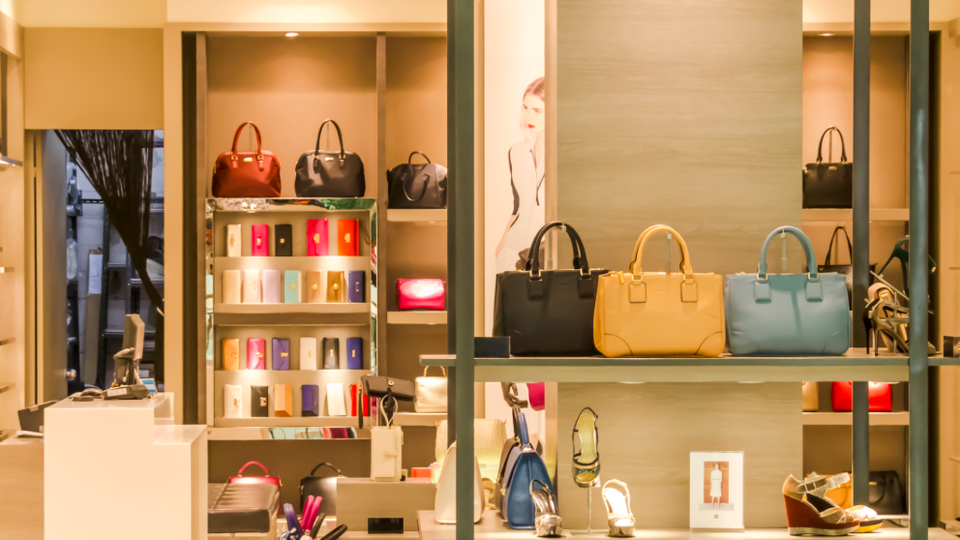As the focus on local shopping festivals like Singles Day and 618 continues to intensify in China, globally recognised celebrations and milestones are beginning to resonate less strongly with Chinese shoppers. What does this mean for international brands, and how can they adapt and develop marketing strategies around these local milestones on e-commerce platforms accordingly? Find out more in DLG’s latest white paper on Leveraging Local Festivals and Milestones on Tmall.

As the focus on local shopping festivals like Singles Day and 618 continues to intensify in China, globally recognised celebrations and milestones are beginning to resonate less strongly with Chinese shoppers. What does this mean for international brands, and how can they adapt and develop marketing strategies around these local milestones on e-commerce platforms accordingly? Find out more in DLG’s latest white paper on Leveraging Local Festivals and Milestones on Tmall.
According to GlobalData, the e-commerce market in China is projected to grow by 17.2 per cent in 2021 and is set to exceed $3 trillion by 2024 – making it the largest and fastest-growing one in the world. While an increasing number of social platforms in China have started rolling out their own e-commerce functionality – the most recent of which being leading short video app Douyin – Alibaba’s Taobao/ Tmall continues to dominate the Chinese e-commerce landscape, having generated an annual GMV of over 6.59 trillion RMB in 2020. With over 200 international luxury brands on its platform, Tmall has become the choice channel for Chinese consumers to purchase luxury goods online as well. In fact, luxury sales on the platform were up 159 per cent year-on-year in the first quarter of 2021.
Local Marketing Milestones
But when do luxury consumers shop online? According to DLG (Digital Luxury Group)’s recently released white paper, Leveraging Local Festivals and Milestones on Tmall, the months of November and June accounted for over 43 per cent of beauty sales generated on Tmall (based on a data sample of 30 leading beauty brands on Tmall) over the past year. While these figures vary across categories, the fact remains that the two key shopping festivals on Tmall, Singles Day in November and 618 in June, account for a significant proportion of overall e-commerce sales.

Besides these major shopping festivals, local celebrations like Chinese New Year (in January/ February) and Chinese Valentine’s Day (in August) also present themselves as key marketing milestones for brands to leverage to drive e-commerce sales. Compared to Western celebrations like Christmas and even Valentine’s Day (14 February), these local celebrations also tend to resonate better with Chinese shoppers.
“Unlike discount-driven holidays in the West, these festivals are critical occasions for brands to launch new products, introduce innovative shopping experiences and create touchpoints with loyal and new customers alike,” says James Lin, Head of Fashion and Luxury for North America, Alibaba Group. “While 11.11 is the most important shopping festival, it is crucial that brands develop a cadence of strategies around other holidays throughout the year and fine-tune their tactics for the long-term.”
Product Strategy
With their brand positioning and overall image in mind, most luxury brands (but not all) tend not to leverage discounts to dispose of excess inventory during these marketing milestones in China. Instead, they leverage the attention surrounding these shopping festivals to launch new products, collections or limited edition items to whet consumer appetites.
Gifts-with-purchase (GWPs) are also a viable way for brands to stimulate purchase intentions while avoiding discounts. Many beauty brands give away travel-sized samples as a way to offer consumers more value in terms of the total amount of product received, for the same price. Other brands, typically in the fashion and luxury sector, offer creative gifts – that sometimes tie in with the overall brand campaign – to pique consumer interest and incentivise them to purchase during this specific shopping event.
Brands can also play around with payment options during these periods, giving consumers the option of interest-free instalments or deferred payments. These alternative payment solutions help to lower the initial barriers of entry (especially for bigger ticket luxury items), and allow brands to reach a wider audience without the need for discounts.
Content that Resonates
More than just a transactional platform, Tmall also serves as a channel for consumers to discover and learn about brands and products. This also suggests that brands need to create sufficient and relevant content for these marketing milestones on Tmall, as they do on other social media platforms, to drive consumer interest.
The Tmall store design itself is part of a brand’s content. In addition to showcasing promotional information including the festival timeline and products on promotion, brands can also consider revamping their Tmall store’s homepage and PDPs – for example, adapting visual assets – to match the campaign or festival theme and captivate shoppers. Brands can offer immersive digital content such as AR/ VR experiences, mini games, or personalisation engines through Tmall’s Second Floor or Mini Programs as well.
Most importantly, brands need to create localised content for such milestones. Besides the fact that global assets are unlikely to be able to support these market-specific festivals and celebrations, content assets tailored for the market will also be able to better capture local consumer attention.
Take Breitling for instance: the watchmaker invited local actor Zhang Yunlong to star in its “Tough to the End” campaign, which featured its new Avenger GMT 43 timepiece with white dial, during this year’s 618 festival. In line with its theme, it also invited local watchmaking and extreme sports KOLs to participate in a livestreaming session. “It is important to get close to your Chinese customers, understand the Chinese communication codes and how they translate in the digital ecosystem,” says Antonio Carriero, Chief Digital and Technology Officer of Breitling. “This means localisation of content, calls to action, as well as tools and systems to better engage with Chinese customers anywhere and anytime, from any digital or physical touchpoint.”
Planning Ahead
Given the importance and scale of these local marketing events, brands need to start preparing for them well in advance – not only at the content and marketing level, but also when it comes to supply chain and logistics. For instance, big festivals like Singles’ Day require brands to start preparing from as early as August.
President at leading e-commerce trade partner Leqee, Kai Liu, notes that it is crucial to prepare a consolidated and comprehensive plan ahead of time for these milestones. “In general, guaranteeing or even surpassing sales targets rely largely on these factors: Precise estimation based on data analysis, the right merchandising in stock or on order, and efficiently communicating with consumers across touchpoints to convert them,” he adds.
Channelling Traffic to Tmall
While Tmall has a wide range of paid advertising options within its ecosystem that brands can leverage to drive traffic to their stores during event and festival periods, brands also need to think about activating channels outside of the Tmall environment. China’s digital ecosystem is highly interconnected and consumers tend to seek different services across different platforms along the consumer journey. As such, brands can leverage social platforms such as Douyin and Weibo to drive consumers to Tmall in order to complete their purchases, either through advertising options or by adding Tmall links in their content.
Brands can also consider making use of its existing CRM database to drive traffic back to Tmall during these events. “Compared to paid traffic, consumers driven to Tmall [stores] by tapping into and activating a brand’s existing CRM database are not only less expensive to acquire, but also have higher conversion potential,” says Mario Juarez, SCRM & Data Strategist at DLG (Digital Luxury Group). The fact that these profiles are registered in the brand database means they are either already customers, or prospects with a high level of interest in the brand, he elaborates. “By this definition, consumers in this pool are already of a higher quality than those acquired through paid options.” CRM channels that brands can leverage include the chat messaging function within Tmall itself, SMS or MMS communications or even targeted WeChat content pushes (possible with an integrated social CRM backend), direct WeChat messages and Moments posts from brand sales associates (through clienteling solutions like WeChat’s enterprise tool, WeCom).
“The importance of shopping events and local celebrations on e-commerce platforms in China can no longer be ignored, and brands need to think about how they can cover all bases and fully leverage all these festivals for all they have to offer,” says Pablo Mauron, co-author of the report and Partner & Managing Director China at DLG. “And this goes beyond developing a tactical livestream with a top KOL or launching a capsule collection – the success of a festival relies on all these elements coming together coherently, under a strong concept, with strong content and activation.”
For more insights, download the full white paper at the link below and watch a recap of our latest DLG Webinar Series: China’s Digital Market on Leveraging Local Festivals and Milestones on Tmall.










